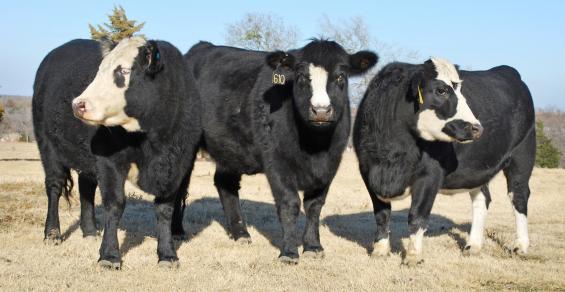The management of a mineral program is often grossly underestimated or under-appreciated, especially in free-choice programs for grazing cattle. Poor management leads to compromised mineral programs ending up with improper intake, excess waste, increased cost and/or poor cattle performance. In most cases, a poorly managed mineral program is just a waste of money. So how can we improve mineral management?
Compromised mineral programs would include:
• Improper placement of minerals that may limit or give excess access to cattle
• Not having enough feeders for the number of animals
• Letting mineral supplement run out
• Not controlling waste due to weather
• Over-diluting minerals with salt or other ingredients
Variation in intake
Variable intake of free-choice mineral is a reality and a challenge we should work to lessen. This variation can be due to environmental reasons such as diet, season, pasture conditions (forage availability), soil nutrients, and stage of production; just to name a few. Then there’s the individual animal variation, which is much harder to predict. There are a lot of studies that show how important mineral nutrition is and what the consequences of deficiency are, but few define individual animal variation.
Most free-choice minerals are formulated for an average intake of 2 to 4 ounces per animal per day. However, some studies show intake levels from zero to over ½ pound of daily intake. These highs and lows will affect costs and may impact the efficiency and absorption of minerals too. Additionally, individual animal variation would suggest some cattle are eating too much and others too little. It’s been said by nutritionists and ranchers alike: “half the cows are eating all the mineral.”
Be Consistent
A “perfect” mineral program does not exist, but with some simple commonsense management, most programs can be improved. Here are some tips:
1. Keep it simple
Feed companies have formulated thousands of mineral formulas. Customization is nice but not always necessary and not always cost effective. A well-balanced supplement that uses quality ingredients will work fine in a lot of situations when fed properly. Don’t get overly set on a certain percentage of phosphorous, salt or another nutrient until you first understand the intake. Cattle eat ounces and grams, not percentages. Sometimes customization is only used as a sales pitch or to justify an already known need. Additionally, tag levels (nutrient specs) can be deceiving. More is not always better.
2. Follow feeding directions on the tag
No matter the form of mineral; loose dry, block or tub, provide the proper number of feeding locations and amount placed. Just like bunk space in a feed yard, the number of mineral feeding stations will affect how well and by how many animals, mineral gets consumed. A common error that occurs is when only one mineral feeder or one tub is placed in front of 50 or more cows. Location of the mineral is important too. Placing it near watering or loafing areas generally gets cattle to consume more and moving it away from said areas can reduce intake. Self-fed tubs or barrels are often used in areas far from water to promote better grazing distribution.
3. Consider palatability
Most mineral fed to cattle is fed in a loose form. Loose minerals offer flexibility in formulation and are relatively easy to manufacture. Mineral formulas in self-fed tubs or barrels, are gaining popularity for a variety of reasons; palatability, weatherability, pasture management, etc. Self-fed tubs are really an “all weather supplement” with virtually no waste. The palatability of CRYSTALYX® Brand Supplements assures predictable intake, and intake by a large percentage of the herd. This intake characteristic makes CRYSTALYX® barrels an excellent vehicle to deliver not only minerals and vitamins but additives as well. Additives such as feed through fly control compounds only work as good as they are consumed. They work very well when delivered via self-fed tubs because they are being consumed consistently and daily.
4. Calculate intake regularly and watch the salt
Salt is technically a mineral and a required nutrient, but salt alone it is not a mineral program. Trace mineral salt is not a complete mineral program either, it’s mostly salt (90 percent or more). Some minerals come with salt added, some don’t. No matter how salt is being offered, it needs to be available. A common practice is to mix additional salt with loose mineral 1:1 or higher to regulate intake. One precaution to take here is to be sure and know the overall intake as to not dilute your program in half. When feeding self-fed tubs or barrels, it is recommended to feed free-choice salt in addition.

Consider using CRYSTALYX® self-fed low-moisture block supplements to simplify your program. These self-fed supplements offer superb management and are very cost competitive. CRYSTALYX® mineral supplements are high quality and target performance driven programs. Don’t over analyze a mineral program without first considering management and how well and by how many of your cows are consuming correctly. Keep it simple and effective.




Leave A Comment